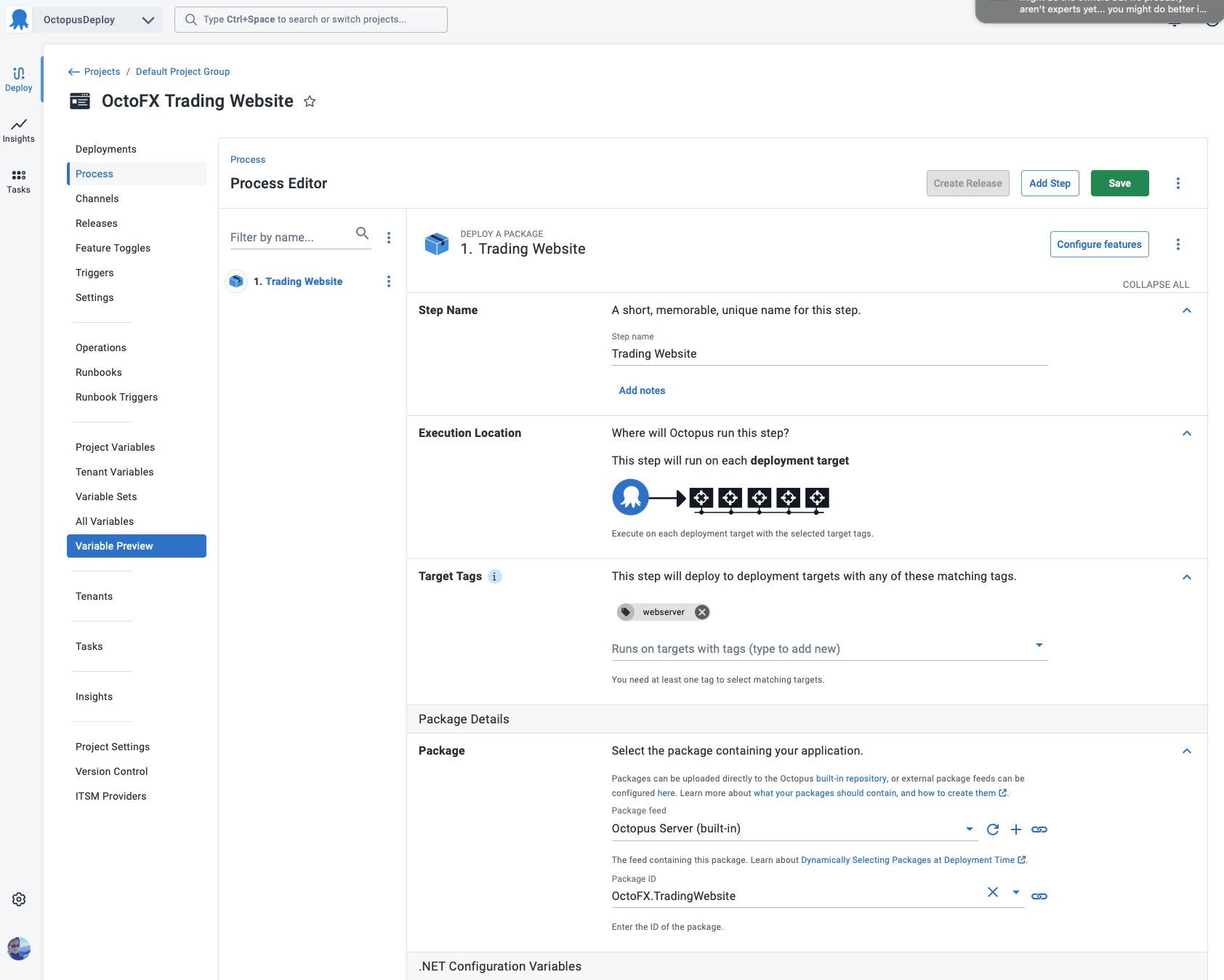When defining your deployment process, the most common step type will be a package step. This step deploys your packaged application onto one or more deployment targets.
Adding a package step
When adding a step to your deployment process, choose the Deploy a Package option. For more information, see the add step section:
When deploying a package you will need to select the target tag that the package will be deployed to. You will also be asked to select the feed that is the source of the package, and the ID of the package to deploy.
Variable Package Feed and/or Package ID You can dynamically select a Package Feed and/or the Package ID at deployment time using an Octopus variable expression. Learn more about using dynamically selecting packages at deployment time.

When multiple machines are associated with the target tag you select, Octopus deploys to all of the machines in parallel. If you need to change this behavior, you can configure a rolling deployment.
Configuring features
Octopus is built to make it easy to deploy your software to multi-cloud, hybrid, and on-premises environments with ease. It contains a number of useful features that can be enabled on package steps. See Configuration Features for more details.
How packages are deployed
- Acquire the package as optimally as possible (local package cache and delta compression).
- Create a new folder for the deployment (which avoids many common problems like file locks and leaving stale files behind):
- Example:
C:\Octopus\Applications\[Tenant name]\[Environment name]\[Package name]\[Package version]\whereC:\Octopus\Applicationsis the Tentacle application directory you configured when installing Tentacle).
- Example:
- Extract the package into the newly created folder.
- Execute each of your custom scripts and the deployment features you’ve configured will be executed to perform the deployment following this order by convention.
- Output variables and deployment artifacts from this step are sent back to the Octopus Server.
Package deployment feature ordering Each part of a package step is executed in a specific order by the open-source Calamari project to enable more complex deployment scenarios.
Help us continuously improve
Please let us know if you have any feedback about this page.
Page updated on Wednesday, May 1, 2024